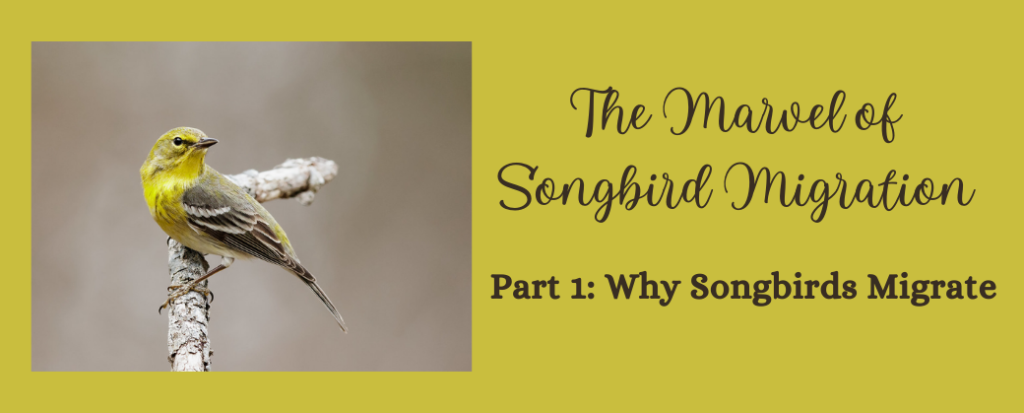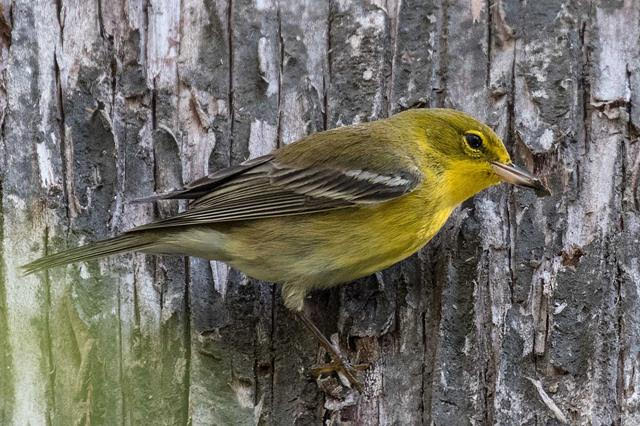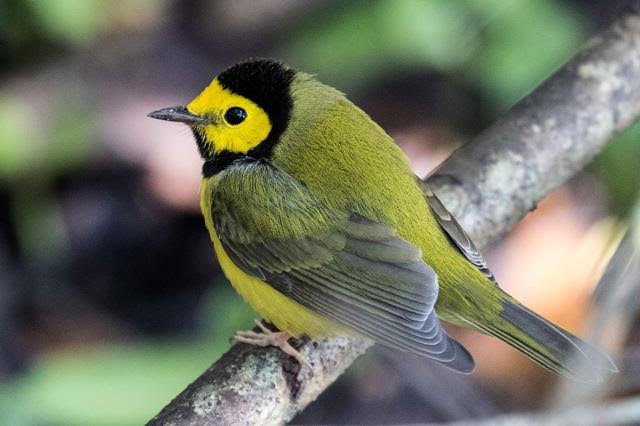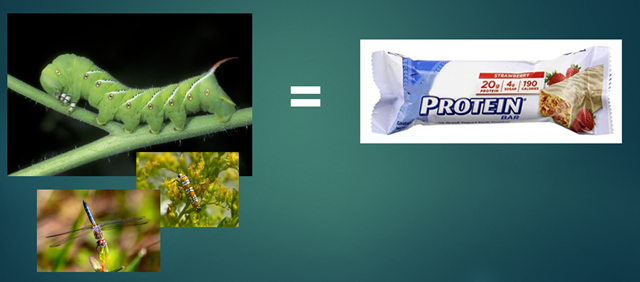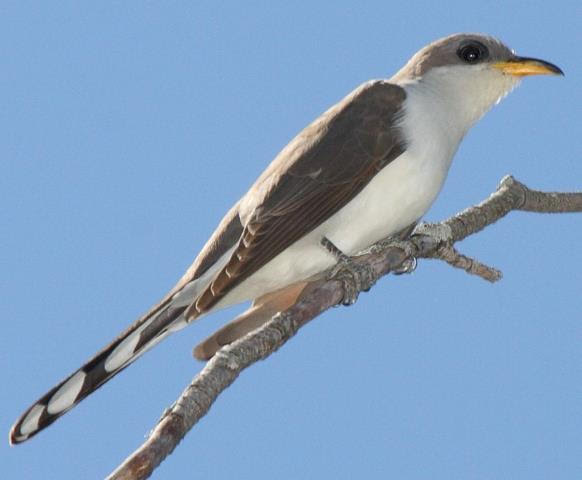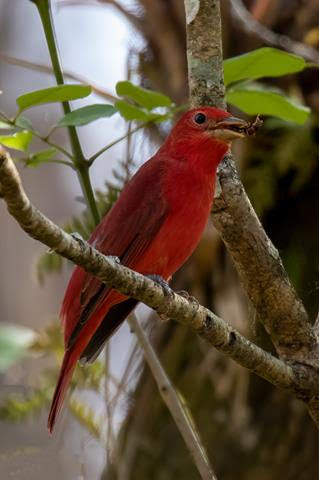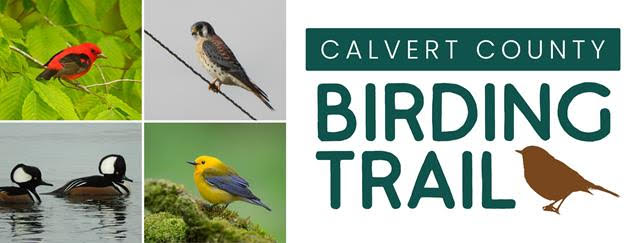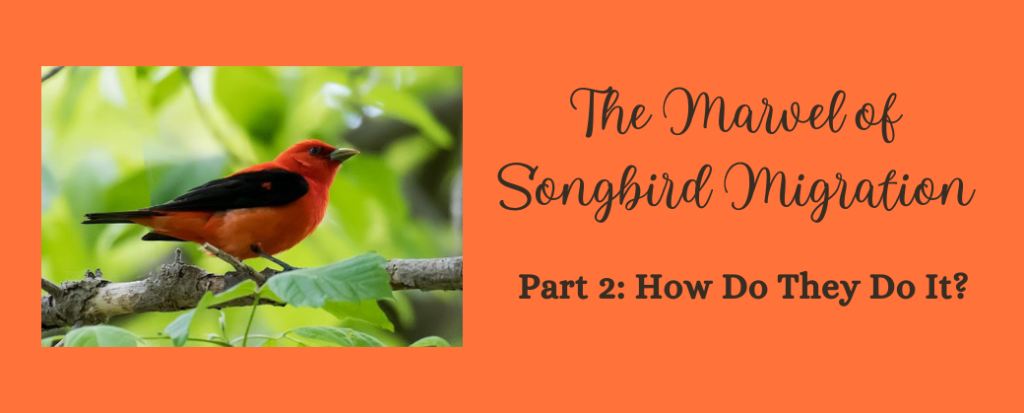
By Judy Ferris, Master Naturalist and Guest Blogger
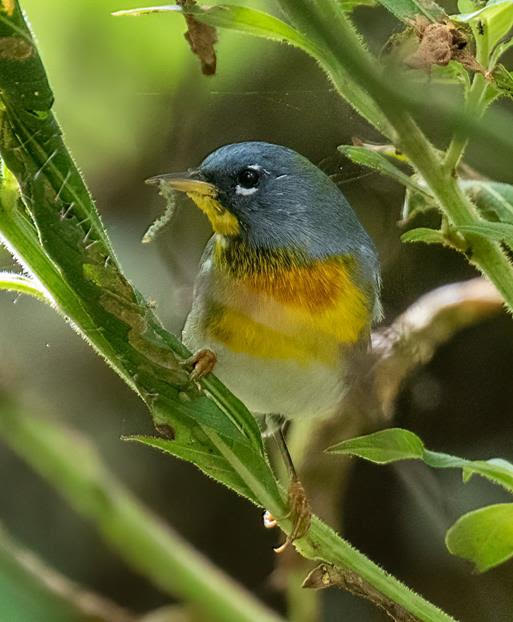
Northern Parula – Winters in the Caribbean and Central America. Nests in eastern U. S. and Canada. Breeds and nests at ACLT. One of our first songbirds to arrive in spring. Click on the link below to listen to its song “Pa-ruuuuLA!” You will hear Parulas in the treetops of ACLT about the time the trees start to leaf out. https://www.allaboutbirds.org/
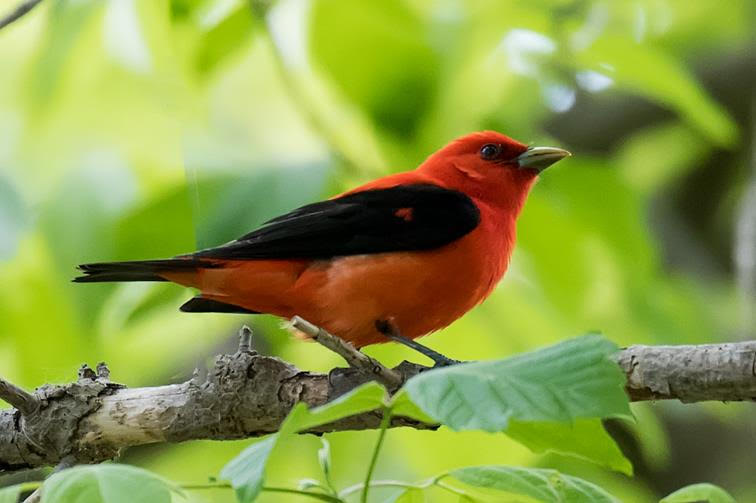
Songbirds generally fly in mixed flocks at night. Yes, these tiny birds take off at dusk, fly through the night, then settle in at a ‘rest stop’ as dawn approaches. Why fly at night? One of the primary reasons is that it is cooler. Songbirds are totally insulated with feathers and can only dump heat through their bare legs. If they flew under the hot sun, the birds would overheat and perish. In addition, winds are generally calmer at night and there is less risk of being picked off by predators.
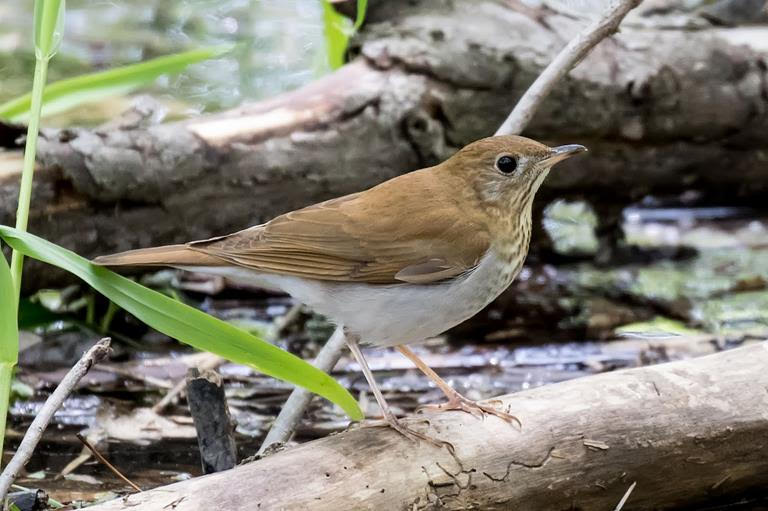
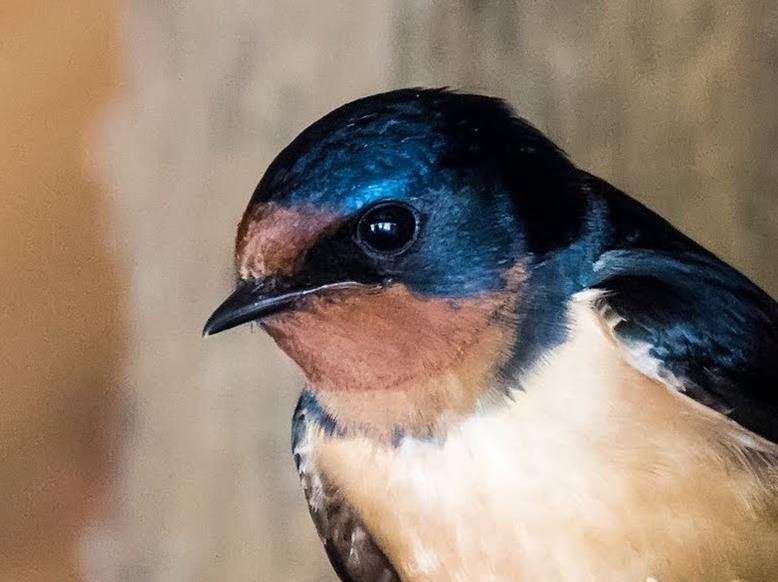
Many songbirds migrate in waves. The first wave to head north are the colorful males. They are keen to be the first to return to their nesting ground to claim a good spot. They advertise their presence with their brilliant colors and plenty of singing. They spend lots of time chasing other males away. The next wave is mostly females. Females are generally duller in color than males. They are soon paired up with males and the two start work on a nest. The final wave to arrive is the immature birds. Young birds are often a bit duller in color than the adults. The dull colors help signal that they will not be involved in scrum for territory or mates, thus protecting them from hormone-crazed adults.
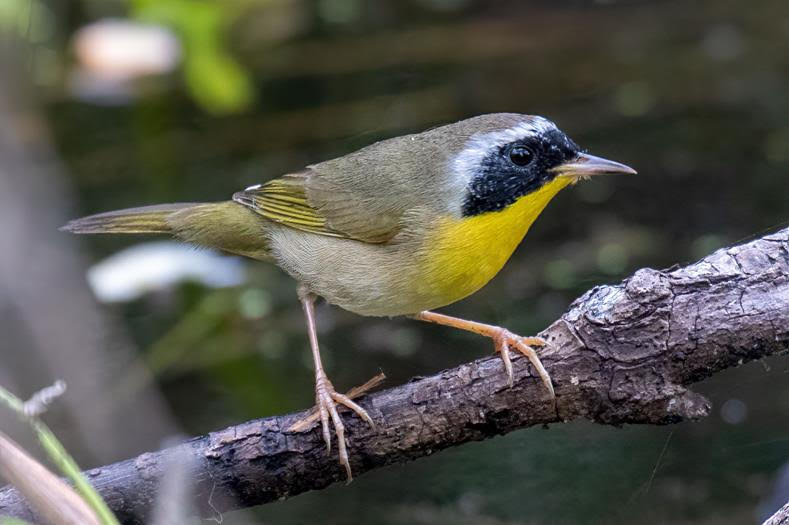
Common Yellowthroat – Winters in Central America and the Caribbean – Nests in most of the U.S. and a breeding bird at ACLT. You may well hear this bird sing ‘Witchity, witchity, witchity” as you walk near Parker’s Creek. Click to hear its song. https://www.allaboutbirds.org/
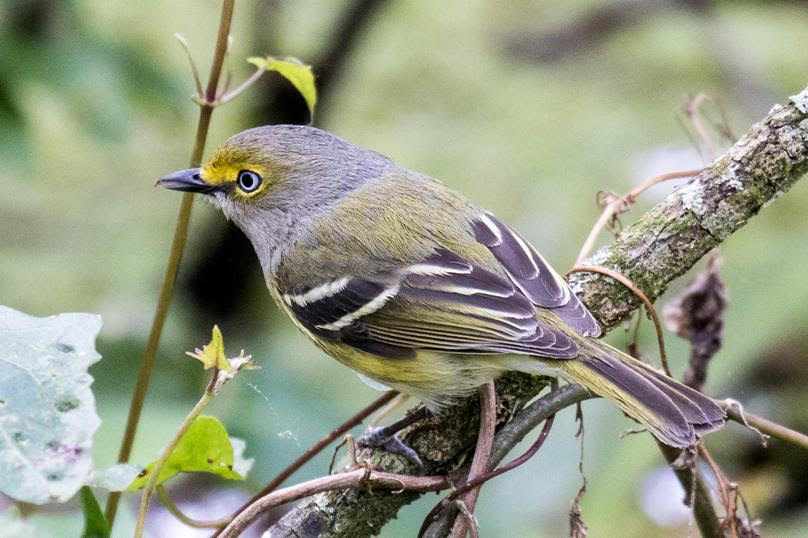
White-eyed Vireo – Winters in the Yucatan and Caribbean – Breeds in eastern U.S. Breeding bird at ACLT. This bird’s herky-jerky song, sometimes emanating from shrubby areas along Parker’s Creek, is unique and one that everyone can recognize. Click to listen. https://www.allaboutbirds.org/
How You Can Help
Migration in today’s world is a significant challenge for birds. Birds face additional challenges by simply living in the complicated world created by us humans. Since 1970, we have lost 1/3 of our birds – an astonishing 3 billion breeding birds. Each of us, however, by changing our everyday habits, can help save these feathered treasures. The bird folks at Cornell Lab of Ornithology have compiled a list of 7 Simple Actions which each of us can take to make the world a safer place for our birds. The list is summarized on the printable page below.
Did you miss Part 1 of this series? Click here to read it now.
Never miss another blog! Join our mailing list below!

